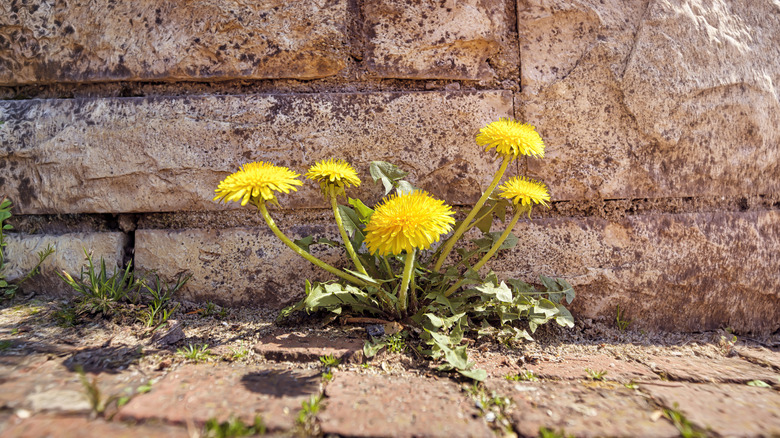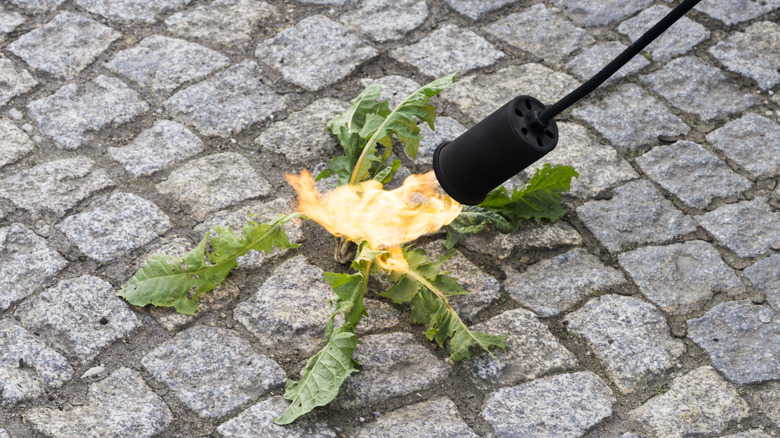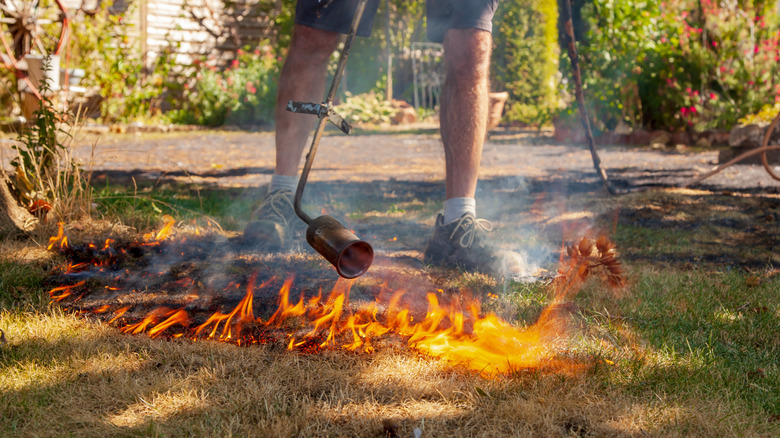This Fiery Solution For Getting Rid Of Dandelions May Be Too Hot To Handle
We may receive a commission on purchases made from links.
Dandelions (Taraxacum officinale) can be a real nuisance. Each flower head is capable of distributing up to 250 seeds around your lawn and yard, so it's no surprise they can spread quickly. Tackling these perennial pests can be quite a challenge. Digging them out is slow, and it's hard work. Herbicides are another option, but many people are trying to reduce the chemicals they spray on their garden, and there's at least one popular weed killer you should think twice about using.
Flame weeders, also called weed torches, are an alternative that many gardeners will want to consider. Depending on their size, they run off anything from a lightweight 1-pound propane canister to the 20-pound tanks used for grills and barbecues. They are more environmentally friendly than chemicals because there's no residue, and while people often assume they have to burn the weed to ash, most plants will die if heated above 160 degrees Fahrenheit for just a few seconds. At that temperature, the cell walls of the dandelion will collapse, the leaves will wither, and moments later, when the plant is cool, it can then be picked up and added to the compost heap (don't add seed heads or roots).
Flame weeding takes time and care
A tool like the popular Ausail propane torch weed burner, which costs around $40, can generate flames at up to 4,000 degrees Fahrenheit. That's way more than is needed to scorch the dandelions that are lurking in your paths, driveways, or walls. However, there are a couple of challenges.
First is that dandelions develop long taproots that burrow into the ground. These can be 18 inches deep or more. The flame kills the top growth, but not the root, so the plant can come back. Experts recommend re-treatment every two to three weeks. After several applications, that will eventually kill the whole plant because without leaves, the root is starved of the sunlight it needs.
The other problem is that while this heavy-duty tool will kill pesky weeds in your garden, it isn't selective and the nozzle doesn't direct the flame particularly accurately. So it's fine around hardscaping, but it's not the way to deal with dandelions in your flower borders or lawn. Nearby plants and grass will also be at risk. For those situations, you'll need to find an alternative, and for any treatment to be effective, it helps to know the best time to treat dandelions and other perennial weeds.
There are important safety considerations
There are obvious risks to walking around your yard and garden carrying what is effectively a small flamethrower. You need to be acutely aware of flammable items and chemicals, and make sure pets and children are well clear of the area. Flames can be hard to see, and there's the potential for things to get out of hand rapidly. Unfortunately, there are well-documented incidents of wildfires being started by weed burning. In fact, in some areas you need a permit to use a weed torch, not only because of the fire risk but also because of the potential for air pollution. Regulations can be confusing so it would be a good idea to check with your local authority before spending any money.
As we become more eco-conscious, there's also the question of whether you should burn or poison these so-called weeds anyway. There are some surprising benefits of having some dandelions in your lawn that are worth exploring. They are good for the soil, for visiting pollinators, and the whole plant is edible.


